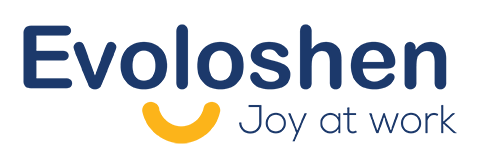
It used to be that the CEOs primary goal was to increase shareholder value and manage a profitable company. And while these are still highly important, there is a wave of change requiring CEOs to broaden their scope of responsibility. It is often referred to as stakeholder value. Let’s dive into what that actually means.
I recently interviewed Garry Ridge, CEO of WD40, who has taken his company’s market cap as a public company from $250M to $2.6B in 15 years with a compound annual growth rate of total shareholder returns of 15%. He’s accomplished this through WORKING ON CULTURE! One of my favorite quotes from this interview is:
“If you take care of your people, your people will take care of your customers, and your customers will take care of your shareholders.”
Garry also shared from research that “90% of a company’s value that is not on the balance sheet can be attributed to the power of your culture.”
A company is a unique group of people who come together on a daily basis to produce value through its products and services. Each company is one of a kind because it is the only one with those specific people working there.
For example, if you recall when you interviewed for jobs at two companies in the same industry that were competitors, you will most likely remember that they each had a different feeling or vibe—one simply felt better than the other to you. That is the energy of the culture! So companies are similar to fingerprints—they are each one of a kind and it is the people that make those unique patterns that don’t exist anywhere else!
There are many stakeholders involved in the success of that company. Working internally, you have the CEO and management team, the board, employees, and managers. Externally you have customers, the overall market, suppliers, vendors, partners, and of course the investors, and let’s not forget the local community as well.
Each of these have different needs, wants, and desires and it can be difficult to cater to each group. But when you can focus on a few certain areas, the rest will be taken care of. Vineet Nayar, former CEO of HCL Technologies, shares his journey in his bestselling book Employees First, Customers Second that by prioritizing employees and empowering them with the resources and ability to make decisions, they were able to take better care of their customers, which led to a huge growth curve during a downturn in the market for most other companies.
In another recent interview with Dr. Paul Zak, the Founding Director of the Center for Neuroeconomics Studies and Professor of Economics, Psychology and Management at Claremont Graduate University and author of The Trust Factor: The Science of Creating High Performance Cultures, he shared his perspective on what it takes to create high performance. He states in his book if you only take one thing from this book, remember this formula:
Joy = Trust x Purpose
What he shows, backed by the latest neuroscience, is that to create a high-performance company culture, CEOs can work with two levers (Trust and Purpose) to increase oxytocin levels that in turn will increase engagement, productivity, creativity, and get the bottom line results that will make shareholders happy. It has a huge ripple effect!
By actively working on your culture, and investing in developing your employees, you can create an amazing company that will increase productivity and engagement, attract the top talent, turn your customers into raving fans, have excellent relationships with all your partners, vendors, and suppliers, and increase profits. That will make the shareholders happy and easier to secure more investors. So why focus on the surface symptoms when you can get to the root cause to solve your company’s problems. It’s never too late to start working with your culture strategically!






